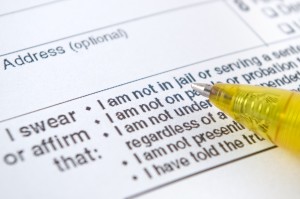
When it comes to accomplishing life’s many tasks, there are two basic ways of getting there. The first method involves haste and speed, but still harnesses success. The second method, on the other hand, requires extensive thought and impeccable planning to bear the best fruits. A medical school application timeline, not surprisingly, falls into the latter category.
Think of it as a triathlon, rather than a 100-yard dash. Spanning roughly the course of a year, the medical school application timeline is a race built for stamina, rather than speed. And it’s a course that requires a different kind of skill (and knack for precise planning) that every uphill climb the application process presents.
Although there’s a wide window for individuals to submit an application form, it certainly won’t behoove you to wait until the last minute. Medical schools work beneath a “rolling admissions” format, meaning that the institution won’t wait until every last applicant has submitted their AMCAS form to start sealing stamps of approval, or rejection.
Here’s an informational medical school application timeline for undergrads to help spearhead your academic planning efforts, and keep your med school skills in line.
Medical School Application Timeline: Junior Year Fall Semester
By the fall semester of your junior year as an undergrad, chances are you’ve had the chance to become well-acquainted with a variety of biology, chemistry and physics courses. Although medicinal work is a more comprehensive career, its foundation is heavy in the sciences. Will you be willing to carry these skills on throughout your career? Be sure to engage in a bit of self-reflection during this time.
If you’ve decided that a medical career is your destined path, start becoming acquainted with the MCAT early on. Although your score won’t be a tell-all for acceptance, your MCAT score (as well as your GPA) will play a pivotal role in the application process. Begin scouring the web for any free practice questions or MCAT guides, and start setting aside time for studying.
You’ll also need to start engaging in some school research during this time. Are there any particular medical fields that interest you, or geographic regions you’d consider living in for several years? Be sure to review all medical school requirements, and keep up on a stellar GPA and volunteering.
Medical School Application Timeline: Junior Year Early Spring Semester/Winter Break
At this point in the medical school application timeline, you’ll need to start signing up for MCAT testing dates. Don’t feel too intimidated as of yet, you’ll have another chance to improve your score later on.
Medical School Application Timeline: Junior Year Late Spring
If you’re at all dissatisfied with your score, take the MCAT again. Even if you feel your score is adequate, it’s been proven that test re-takes bear better scores for standardized exams.
During this point in the medical school application timeline, you’ll need to start getting serious about your study habits. Consider enlisting the help of a MCAT tutor, or inquire about possible MCAT prep programs in your science and premed departments. Don’t forget to build those teacher-student relationships as well, as the spring semester of junior year is the perfect time to start honing in on possible recommendation candidates.
This point during the medical school application timeline, it’s also a good idea to start narrowing your list of potential medical schools. Separate your schools into “match” (reachable, but still challenging), “safe” (a near-guarantee for acceptance), and “dream” (a lower likelihood, but slight chance, of getting accepted).
Medical School Application Timeline: Summer
If you’re still not satisfied with your MCAT score, take it a final time (given there’s time to do so).
Complete your AMCAS application once you’ve settled on a MCAT score you’re comfortable with.
Medical School Application Timeline: Senior Year Fall Semester
At this point in the medical school application timeline, the process starts switching into high-gear. If a medical school likes your candidacy, they’ll send over a more individualized, secondary application. This will require an absolutely perfect personal statement, and a stellar interview. Be sure to allow yourself ample time to ensure the secondary application is impeccable.
Once the winter or spring of your senior year arrives, acceptance (and rejection) letters will soon begin to arrive in your mailbox.
If you don’t receive entry into a targeted school, or none at all, consider reevaluating your career choices or prepare for next year’s medical school application timeline.
